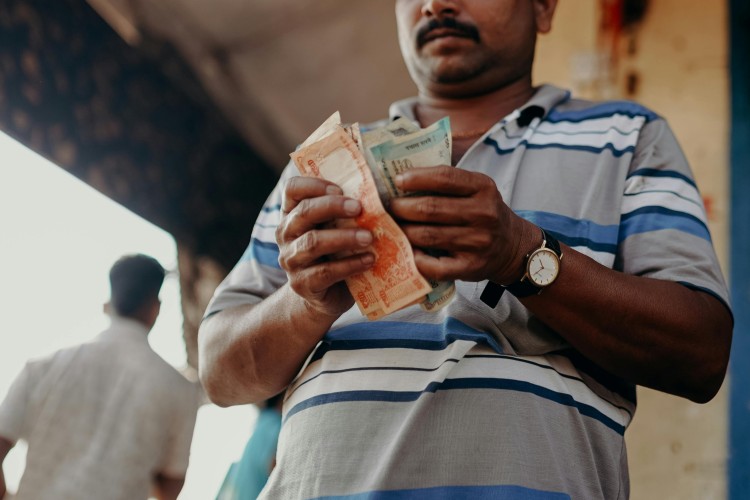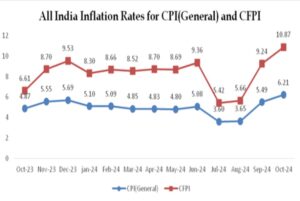
The November bulletin of the Reserve Bank of India sheds light on the state of the Indian economy, showcasing resilience in some sectors and challenges in others. Among the key takeaways is the revival of private consumption, which contradicts reports of a slowdown even during the festive season. However, the trends and observations call for closer examination, especially given conflicting data from various sectors.
According to the RBI, private consumption has picked up, driven by strong festive sales. This rebound is testimony to the Indian economy’s solid macroeconomic fundamentals and presents a bullish medium-term outlook. However, this optimistic view diverges from reports suggesting that festive season sales reflected a more divided consumer base.
READ | Climate change: Will Trump’s policies derail global progress
Middle class consumption slows
For instance, Policy Circle, in a recent article, highlighted the growing economic divide during festive sales. While affluent consumers indulged in premium and luxury products, a significant section of the population struggled to afford basic necessities. Moreover, footfalls in physical stores remained low, even as e-commerce platforms thrived, leveraging marketing strategies and brand recall campaigns to capture Generation Z’s attention. This divergence raises questions about the inclusiveness of the perceived economic recovery.
Globally, the RBI bulletin noted resilience in economic activity during Q4 2024, despite rising protectionism and fragile market confidence. For the Indian economy, this resilience has translated into stable, albeit cautious, optimism about future growth prospects amid global economic headwinds.
Agriculture offers hope for Indian economy
The agriculture sector remains a pillar of strength for the economy. With bumper kharif production and promising prospects for the rabi crop, farm incomes and rural demand are on an upswing. The adoption of digital crop surveys and drones is set to transform the sector, enabling real-time monitoring, optimised production estimates, and enhanced supply chain management. This technological push bodes well for long-term agricultural resilience.
The bulletin highlights contrasting developments in the banking sector. On one hand, private banks are grappling with challenges in retail lending, particularly for credit cards and personal loans. On the other hand, credit growth to businesses is on the rise. The RBI has advised banks to adopt a prudent approach to credit expansion, ensuring a balanced growth between deposits and loans.
India’s stock market is reeling under the impact of record foreign portfolio investment (FPI) outflows, subdued corporate earnings, and the relentless strengthening of the US dollar. These factors have led to market corrections and a decline in private investment in fixed and non-current assets. Despite these challenges, the RBI remains optimistic about financial conditions, citing positive trends in corporate bond issuances and foreign direct investment (FDI) inflows.
Sticky inflation a big challenge
Inflation remains a critical concern for the Indian economy, with headline consumer price index (CPI) inflation breaching the upper tolerance band in October 2024. A sharp rise in food prices and core inflation has compounded the problem, prompting warnings from the RBI about potential risks to the broader economy. High input costs are already straining urban consumption and corporate earnings, which could dampen future investments.

The RBI has hinted that interest rate cuts are unlikely in the near term, given the persistent inflationary pressures. Policymakers will need to tread carefully to balance inflation control with sustaining growth momentum.
Beyond immediate economic challenges, India must address the dual crises of pollution and climate change. Rising environmental degradation could have severe repercussions for public health and economic growth, with adverse impacts on gross domestic product (GDP). Proactive interventions in these areas are essential to ensure equitable and sustainable development, especially as India aims to join the ranks of developed nations.
Despite these challenges, Indian economy continues to stand out as one of the world’s fastest-growing large economies. Deloitte projects GDP growth to remain between 7% and 7.2% in FY 2024-25, with slightly moderated growth of 6.5% to 6.8% in the following fiscal year. The government’s focus on boosting manufacturing, improving youth employability, and leveraging the aspirations of a young population will remain key drivers of this growth.
The RBI bulletin presents a complex picture of the Indian economy, balancing optimism with caution. While sectors like agriculture and business credit growth offer hope, challenges like inflation, stock market volatility, and environmental degradation require urgent attention. Policymakers must adopt a balanced approach to ensure that growth is inclusive, sustainable, and resilient to both domestic and global shocks.
